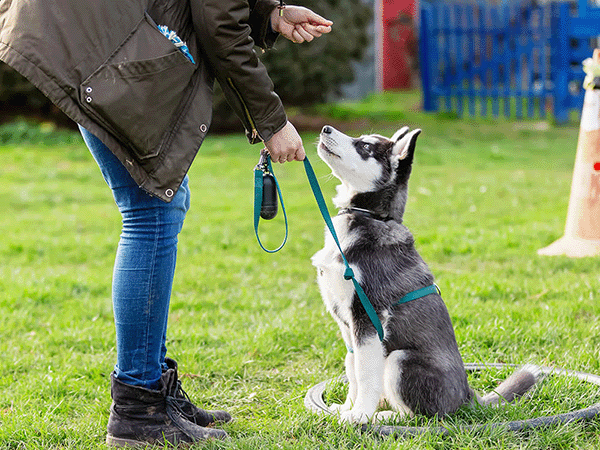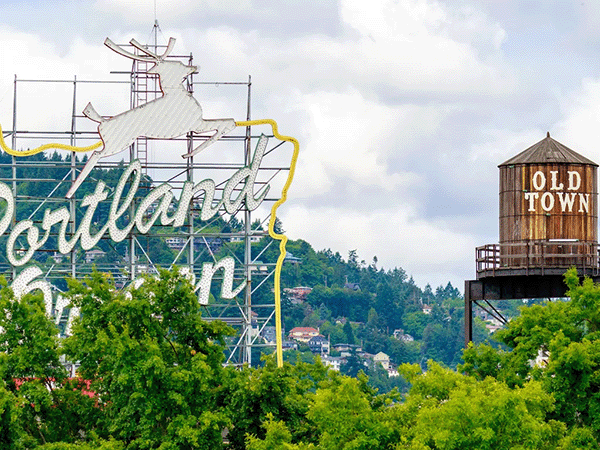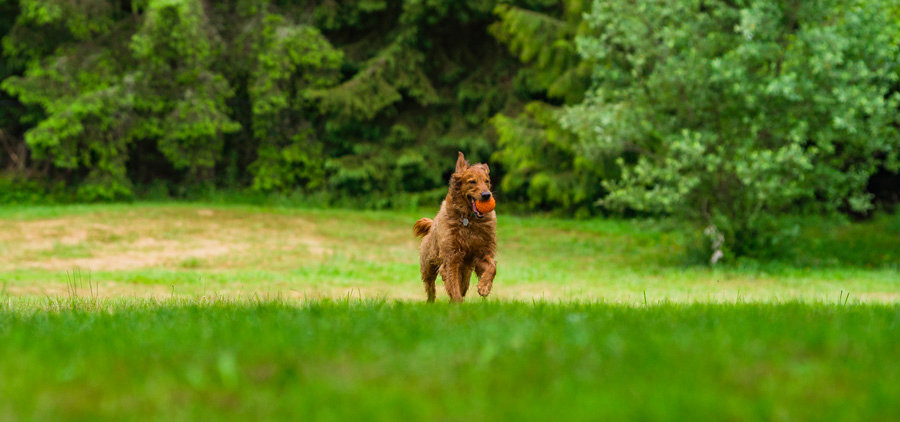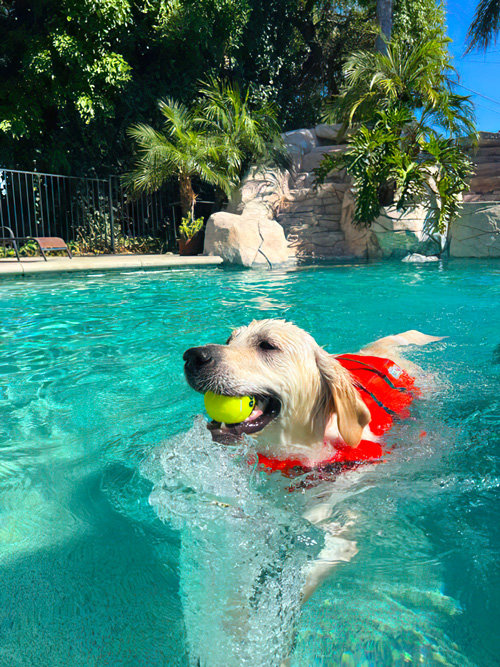Herding Dog Training: Common Challenges & Solutions

You've got a herding dog? Get ready for some serious smarts—and maybe a little mischief. Breeds like Border Collies and Australian Shepherds are brilliant, but that intelligence can lead to some quirky herding dog behavior problems. This guide dives into the herding dog mind, exploring those unique traits and offering practical herding dog training tips. Let's build a stronger bond with your amazing herding dog, one step at a time.
But that natural intellect doesn’t always make herding dogs simple to train. In fact, many guardians of these brilliant breeds say their companions are too smart for their own good. (Maybe even cleverer than the human end of the leash.)
We’ve got you covered. Here’s what you need to know to train your own herder. Whether you just brought home a new puppy or are working with an adult dog, the right teaching methods and background knowledge can help you build a strong relationship.
Let’s dive — or should we say, drive? (Thanks for laughing, cattle dog owners) — in!
Common problem behaviors and training struggles with herding dogs
Herding dogs are known for many wonderful traits, like freely offering engagement with their handlers and embracing problem-solving activities. They also have some common struggles.
While every dog is an individual, here’s a look at the most typical problem behaviors reported by owners of herding breeds.
Key Takeaways
- Herding breeds thrive with outlets for their natural instincts: Activities like herding balls, treibball, agility training, and exploring safe spaces like Sniffspot can help your dog feel fulfilled and reduce problem behaviors.
- Reactivity and sensitivity are common in herding dogs: Understand that these behaviors often stem from a heightened awareness of motion and a natural protectiveness. Management and positive reinforcement training can help your dog feel more comfortable.
- Training takes patience, understanding, and a positive approach: Celebrate your herding dog's unique traits and seek professional guidance if needed. Remember that training should strengthen your bond and be a rewarding experience for both of you.
Herding breeds can be hyper alert or fixated on the environment
Herding dogs were bred to be watchful of their surroundings
For generations and generations, humans have selectively bred herding dogs to have a keen sense of observation. Nothing gets by an animal developed to pay attention to subtle movements! This trait is an incredible asset for working dogs who need to move cattle, sheep, or other kinds of livestock alongside their shepherds or ranch owners. But it can have its drawbacks in many modern-day pet environments.
Some herding dogs become obsessed with movement, even resorting to chasing things like shadows or small light reflections around the house. It’s imperative that you mix up your herding breed’s daily activities so they never get too much stimulation from fixating on motion. Incorporate mental exercise and enrichment, like puzzle feeding toys or obedience training. Help your dog feel calm without constantly scanning the environment.
Avoid these activities with your herding dog:
- Playing with laser pointers. This can tap into your herding breed’s innate motion sensitivity and increase your dog’s chances of developing mental or behavioral health problems like OCD (obsessive compulsive disorder), neurotic behavior, or a general inability to disengage from the surrounding environment.
- Exclusively playing fast-paced chasing games like fetch for your dog’s daily physical exercise. There’s nothing wrong with throwing a ball or frisbee on occasion. Just make sure it isn’t all you do with your herding breed. Mixing in other calmer activities (or practicing impulse control during the game by having your dog hold a down stay or perform another cue before being released to chase) will satisfy your pup’s natural instincts without creating an unhealthy obsession. (Looking for toys for your herding breed? We’ve put together our favorites here.)
Herding breeds can be sensitive to noise, especially in modern settings
Think about the original lifestyle of a working herding dog. Most of them lived on huge stretches of land, fields, or farms — while their days were busy and full of activity, the surrounding environment was pretty quiet. That’s a big change compared to today’s modern world full of sirens, music, car horns, strange dogs barking, and more. Whether you live in a crowded city or suburban neighborhood, chances are it’s still a stimulating environment for your herding dog.
Herding breeds are prone to noise sensitivity just like they’re predisposed to pay attention to subtle movements. It’s common for these dogs to be nervous around traffic or even “everyday” sounds like the footsteps of your neighbor across the hall.
What’s more? Many herding breeds were also developed to be protective of their property. This means they’re extra likely to be sensitive to sounds that might predict a stranger entering their territory.
If this is your dog, don’t fret. It’s normal! By pairing scary sounds with delicious treats or favorite toys (a process called counterconditioning) you can help your herding dog feel better about the world around them. You’ll also see success from taking a few deep breaths and making sure you yourself stay calm around startling noises. Remember that your dog pays a lot of attention to the way you react!
Many herding dogs are prone to reactivity, especially to strangers and fast-moving animals or objects
One of the most common behavioral problems in herding breeds is reactivity. This is for a few reasons.
- As mentioned above, herding dogs were developed to pay close attention to motion. They have a hard time “just ignoring” the environment. Subtle changes (like someone approaching, even from a far distance) will catch their attention. Fast- or irregularly-moving objects can light up their herding instincts, sending them into a state of frustration if they aren’t able to act on their impulses to control the things around them.
- We also touched on the fact that herding dogs can be naturally protective. This involves an element of “stranger danger” — many herding breeds are a bit wary of new people, to the point that it’s included as a trait in their breed standards. Without proper socialization, it’s easy for Cattle Dogs, Border Collies, and more to develop full-blown fear reactivity to people they don’t know.
- Speaking of socialization: Many ancient herding dogs simply never encountered people or animals who weren’t in their family. It’s more natural for some dogs (like Labrador Retrievers) to be interested in socializing with strangers in practice than it is for others.
Understanding Reactivity in Herding Dogs
One of the most common behavioral problems in herding breeds is reactivity. This is for a few reasons. As mentioned above, herding dogs were developed to pay close attention to motion. They have a hard time “just ignoring” the environment. Subtle changes, like someone approaching from a distance, will catch their attention. Fast- or irregularly-moving objects can trigger their herding instincts, sending them into a state of frustration if they aren’t able to act on their impulses to control the things around them.
We also touched on the fact that herding dogs can be naturally protective. This involves an element of “stranger danger.” Many herding breeds are wary of new people, to the point that it’s included as a trait in their breed standards. Without proper socialization, Cattle Dogs, Border Collies, and other herding breeds can easily develop full-blown fear reactivity to unfamiliar people. Historically, many herding dogs simply never encountered people or animals outside their family. It’s more natural for some dogs (like Labrador Retrievers) to be interested in socializing with strangers than it is for others.
Managing Reactivity Triggers
If your herding dog is reactive, management is key. This means preventing your dog from practicing unwanted behaviors, like barking and lunging on leash. Avoid situations that you know will trigger your dog’s reactivity. If your dog barks at strangers passing by your living room window, close the blinds or use a window film to obscure the view. If your dog lunges at other dogs on walks, create as much distance as possible between your dog and the triggers. A longer leash can be helpful for this. Consider changing your walking route or time of day to avoid triggers.
Finding safe, enriching spaces for your reactive herding dog to explore can make a real difference. Sniffspot offers private, off-leash dog parks where your dog can run and play without encountering unknown dogs or people. This can be a great way to provide exercise and enrichment while avoiding reactivity triggers. Many Sniffspot hosts even offer amenities like agility equipment or swimming pools, which can be a fun way to tap into your herding dog’s natural athleticism and love of problem-solving.
Herding breeds can nip guests, children, or other animals
A common way herding dogs control the movement of the livestock they’re working? By nipping at their vulnerable heels. (This is precisely why Australian Cattle Dogs are called “heelers.”)
Many people who adopt a herding breed are surprised when their dog starts going after their ankles or shins — even worse when it’s the legs of guests, children, or other animals in the home. This can be startling. No one wants to think about their dog biting someone! But nipping in this context is incredibly natural behavior. It also ties into the reactivity we mentioned above. Some herding dogs are reactive to fast-moving objects purely out of herding drive, even if they aren’t fearful.
Most herding dog nipping can be controlled by providing appropriate outlets for your dog to satisfy their natural desires and carefully managing difficult situations. It’s generally recommended that no dog be left alone around young children — and this is especially important for breeds that have a predisposition to mouthy behavior or herding kids.
Nipping vs. Biting
It’s important to differentiate between nipping and biting. While the behaviors look similar on the surface, their motivations are very different. Nipping is rarely aggressive. Instead, it’s usually a herding dog’s attempt to move something—or someone—in a particular direction. Biting, on the other hand, is performed with the intent to cause harm, making it much more serious.
Many herding breeds nip at the heels of livestock. In fact, that’s how Australian Cattle Dogs earned the nickname “heelers.” This instinct to nip can transfer to people, especially children or guests running around the house. It can be startling to experience, but it’s not usually aggressive.
Addressing Nipping Behavior
You can curb most nipping by giving your dog appropriate outlets for their natural herding instincts. Enrichment activities, like herding balls or agility training, can satisfy your dog’s need to “herd” without involving human ankles. A tired dog is also less likely to engage in herding behaviors, so ensure your dog gets plenty of physical exercise. Sniffspot offers safe, private dog parks where your herding dog can run and play freely.
Management is also key. Never leave young children unsupervised with any dog, especially herding breeds. If your dog’s nipping behavior stems from overstimulation or reactivity, manage their environment to reduce triggers. This might involve keeping them on leash in busy areas or using positive reinforcement to train an alternate behavior, like targeting your hand, when they feel the urge to nip. If you’re struggling, consider working with a certified professional dog trainer or behaviorist. They can help you create a training plan tailored to your dog’s specific needs.
Herding dogs can be sensitive about their personal space
Herding breeds aren’t just aware of motion in the world around them — they’re also keenly sensitive of their own body movements and personal space. Many Border Collies in particular hesitate to get too close to anything around them, be it a stationary object like a piece of furniture, a person, or another animal. You can think of it a little like your herding dog feeling rather claustrophobic.
Common ways spatial sensitivity plays out in pet herding dogs:
- Hesitation to have their collars or harnesses grabbed (this can make attaching a leash especially tricky)
- Shying away when someone reaches in to pet them, especially near their face
- Not wanting to perform obedience cues that involve being incredibly close to their handler, like formal “front” recalls or weaving between legs
Many herding dogs are easily able to overcome, or at least lessen, their spatial sensitivity through patience and positive associations. Don’t allow your dog to be grabbed by anyone if they aren’t showing interest. Avoid backing them into a corner or asking them to navigate a tight furniture arrangement. Provide plenty of praise and rewards (like tasty treats or favorite toys) for working in close proximity to you, your family, strangers, and inanimate objects.
Respecting Your Dog's Boundaries
Herding breeds aren’t just aware of motion in the world around them—they’re also keenly sensitive to their own body movements and personal space. Many Border Collies, for example, hesitate to get too close to anything around them, whether it’s a stationary object like a piece of furniture, a person, or another animal. Think of it as your herding dog feeling a bit claustrophobic.
Common ways spatial sensitivity plays out in pet herding dogs include hesitation to have their collars or harnesses grabbed (this can make attaching a leash especially tricky), shying away when someone reaches in to pet them, especially near their face, and not wanting to perform obedience cues that involve being incredibly close to their handler, like formal “front” recalls or weaving between legs. For more information on herding dog behavior, check out this helpful resource. Thankfully, many herding dogs can overcome, or at least lessen, their spatial sensitivity through patience and positive associations.
Don’t allow your dog to be grabbed by anyone if they aren’t showing interest. Avoid backing them into a corner or asking them to squeeze through tight furniture arrangements. Provide plenty of praise and rewards (like tasty treats or favorite toys) for working in close proximity to you, your family, strangers, and inanimate objects. A safe, enriching environment can also make a big difference.
Many herding breeds are picky about their food
It’s normal for herding dogs to be picky eaters. When the world around them is so stimulating — so much to watch! so much to smell! — food can be the last thing on their minds. Some breeds and individual dogs are more excited about treats than others.
If your herding dog isn’t particularly food motivated, you can try a few different things:
- Always start training new behaviors in familiar, low distraction environments. If your dog refuses food, this could be a sign they’re feeling too overstimulated.
- Avoid offering your dog consistently higher and higher value treats if they turn down your first offerings. It’s definitely a good idea to pay attention to what they do and don’t like — but too many repetitions of them refusing one reward only for you to produce something “better” can actually reinforce their pickiness. You don’t want your dog always holding out in hopes that you’ll offer them something they prefer even more.
- You might consider training with toys instead of food if your dog loves to play. Bonus that you don’t have to worry about balancing calories or limiting physical activity on a full stomach to prevent problems like bloat!

Why Are Herding Dogs Picky Eaters?
It’s normal for herding dogs to be picky eaters. When the world around them is so stimulating—so much to watch! so much to smell!—food can be the last thing on their minds. Some breeds and individual dogs are naturally more excited about treats than others. This can be especially true for herding breeds prone to environmental reactivity and sensitivity. If your dog is constantly on high alert, they may have less of an appetite or simply not notice you're offering them a snack.
Tips for Encouraging Healthy Eating Habits
If your herding dog isn’t particularly food motivated, you can try a few different things:
- Always start training new behaviors in familiar, low-distraction environments, like inside your home. If your dog refuses food, this could be a sign they’re feeling too overstimulated. A safe, quiet Sniffspot can be a great option for working on training with fewer distractions than a public park.
- Avoid offering your dog consistently higher and higher value treats if they turn down your first offerings. It’s definitely a good idea to pay attention to what they do and don’t like—but too many repetitions of them refusing one reward only for you to produce something “better” can reinforce their pickiness. You don’t want to accidentally teach your dog to always hold out hoping you’ll offer them something even tastier.
- Consider training with toys instead of food if your dog loves to play. Bonus: you don’t have to worry about balancing calories or limiting physical activity on a full stomach to prevent problems like bloat! Check out our list of favorite toys for herding breeds for some ideas.
For more tips on training and enriching the lives of herding dogs, take a look at our articles on common problem behaviors and enrichment activities.
How to understand, fulfill, and train your herding dog
Understand what your herding dog was bred for
In the above section, we saw many common problem behaviors in herding breeds — and you might have noticed that almost all of them are rooted in natural herding instincts and tendencies that come from generations and generations of selective breeding.
What does that mean for training your herding dog? First and foremost, you have to accept who your pup is! It’s unfair to ask your herding breed to ever completely suppress their instinctive behaviors and drives. You might have different challenges with your Border Collie or Corgi or Shepherd than your neighbor has with their own breed — and that’s okay. When you understand where your dog’s behavior is coming from, it’s easier to practice empathy and bring more patience to your training sessions.
The History and Purpose of Herding Breeds
Herding dogs have a rich history, dating back thousands of years to when humans first domesticated sheep and goats in Western Asia. Originally, their primary role was guarding herds from predators. As agricultural practices evolved, so did the dogs' responsibilities, shifting towards managing livestock and protecting crops. This involved controlling the movement of animals, often across vast distances and challenging terrains.
Over generations, humans selectively bred these dogs for specific traits like a keen sense of observation and an innate ability to control the movement of other animals. This resulted in dogs highly attuned to subtle movements and possessing the intelligence and stamina required for long days working alongside shepherds and ranchers. Different breeds emerged in different parts of the world, each adapting to the specific climate and type of livestock they worked with. For example, the compact and agile Corgi was perfectly suited to nipping at the heels of cattle in the fields of Wales, while the Border Collie thrived in the hilly terrain of the Scottish borders, herding sheep with intense focus and stamina.
While many herding dogs still work on farms and ranches today, a significant number have transitioned into life as family pets. This shift in lifestyle, however, doesn't erase their deeply ingrained instincts. A Border Collie lounging on a living room rug still possesses the same drive to herd and control movement as their ancestors. This is why providing opportunities for mental and physical stimulation is crucial for these breeds. Whether it's a challenging game of fetch, navigating an agility course, or learning new tricks, activities that engage their minds and bodies are essential for a happy and well-adjusted herding dog. You can even find dog-friendly spaces perfect for exercising your herding breed on Sniffspot.
Give your herding dog opportunities to act on their instincts
Once you understand your herding dog’s instincts, you can give them appropriate opportunities to satisfy their natural desires! This is important for several reasons:
- When your dog is able to act on their herding tendencies in safe situations, they’ll feel less frustrated and pent-up in moments where it isn’t appropriate and you ask for impulse control instead.
- Doing inherently fun activities together, like play that fulfills elements of herding, will build your bond as a team.
- A fulfilled dog will be calmer, more focused, and easier to live with.
Private Sniffspots are perfect to let your dog safely stretch their legs
Sniffspots are a great option for allowing your dog to run, chase, and explore without worrying about encountering surprises like other people, animals, or off-leash dogs. This can be especially beneficial for herding breeds prone to reactivity!
Other Ways to Engage Your Herding Dog's Instincts
Looking for more ways to help your herding dog embrace their natural instincts? Here are a few ideas:
- Herding balls or other toys: Many herding breeds enjoy pushing large exercise balls around a yard or open space. This allows them to engage their instincts in a safe, controlled way. You can even add a layer of impulse control by asking your dog to perform other cues (like sits, downs, or stays) in between repetitions.
- Treibball: This competitive dog sport involves herding large exercise balls across a field and into a goal. Treibball is a great way for herding breeds to have fun, build confidence, and strengthen their bond with their handler.
- Formal herding lessons or trials: If you’re interested in working with real livestock, look for herding lessons or trials near you. Many herding breeds thrive in these environments, and it’s a great way to help your dog feel fulfilled.
Remember, a fulfilled dog is a happy dog! By understanding and engaging your herding dog's natural instincts, you can help them live a calmer, more balanced life. Finding activities that let your dog act on their herding tendencies will strengthen your bond and reduce frustration in situations where they need to practice more impulse control. And if you're looking for a safe, enriching space for your herding dog to run and play, check out the dog parks available on Sniffspot.
Do I have to let my herding breed actually herd other animals?
Part of fulfilling your dog’s herding instincts might be actually enrolling them in a herding class or private lessons with sheep, goats, or other livestock — but it’s not a necessity to be a good herding breed owner. You can also provide a range of substitute activities like playing with a herding ball or encouraging your dog to stalk toys before pouncing on them. (Take a look at some of our favorite toys for herding breeds in this article.)
How to get started if you’re interested in herding
If you do decide you want to dabble in real herding, here are a few things to do:
- Build a foundation of basic cues. Herding dogs need to be adept at general impulse control and common cues like sit, down, and stay. Bonus if your pup can perform these behaviors at a distance and hold them around distractions! You might even consider entering an obedience trial to test their skills.
- Get your dog exposed to livestock, preferably under the guidance of a professional trainer. Whenever we’re working our own pets around other animals, it’s important to be respectful and keep safety top of mind. Getting in touch with an experienced herding instructor space is a great way to start. They’ll be able to test your dog’s instincts without stress! This ensures a positive experience for all animals involved.
- Learn about herding lingo. Spend some time reading up — or better yet, directly talking to folks in the community — about common herding jargon. Learning the meaning of terms like “come bye” (go clockwise around the stock) versus “away” (counter clockwise) and more will help you understand what’s going on when you watch dogs work and train your own pup more effectively.
- Practice and hone your skills over time. No one turns into a herding pro overnight. That’s okay! Spend time practicing — eventually you and your dog will both build valuable skills you can use in herding competitions or just for fun in casual training sessions.
You can learn more about herding with your dog in our complete guide here!
Be patient and thoughtful in your herding dog training
Remember that your herding dog’s struggles are normal. These are delightful, engaging, fun breeds to own — and they’re also challenging! Show both yourself and your dog grace when things don’t go as well as you hoped.
Don’t hesitate to work with a professional trainer
If you feel like you’re “in over your head” when it comes to your dog’s herding instincts, consider connecting with a certified force free trainer. They’ll be able to use their own firsthand experience and extensive education to help you understand your dog, identify your biggest goals, and ultimately create a personalized training plan.
Choosing the Right Herding Breed for You
Matching Breed Temperament to Your Lifestyle
Herding dogs are intelligent, energetic, and loyal. They need lots of mental and physical stimulation to avoid destructive behaviors like excessive barking or chewing. Before you welcome a herding breed into your life, think honestly about how much time and energy you have to dedicate to training, exercise, and enrichment. Some herding breeds, like Border Collies, are notorious for needing more activity than others. Research different breeds—this list of 33 herding breeds is a great place to start!—and consider if their temperaments are a good match for your lifestyle.
If you live in an apartment, you might find that a lower-energy herding breed (like a Corgi) is a better fit than a higher-energy breed (like an Australian Cattle Dog). Similarly, if you aren’t a huge fan of going for runs, a herding breed that thrives on long-distance exercise might not be the right choice. Private Sniffspots can be a great option to let your dog stretch their legs and burn off energy in a safe and controlled environment.
Researching Breed-Specific Health Concerns
Herding dogs have a long history, going back thousands of years to when humans first domesticated sheep and goats in Western Asia. Over the centuries, different breeds developed with unique traits and predispositions to certain health conditions. Learn more about the history of herding dogs.
Just like you’d research the typical temperament of a breed before bringing a puppy home, it’s important to understand common health concerns. Some herding breeds are prone to hip dysplasia, eye problems, or other genetic conditions. Being aware of these potential issues can help you make informed decisions about the right breed for you and prepare for future veterinary care.
Creating a Fulfilling Life for Your Herding Dog
Providing Mental and Physical Enrichment
Remember that herding dogs were bred to work! They thrive when given opportunities to use their brains and bodies. Providing mental and physical enrichment is key for a happy, well-adjusted herding dog. This could include activities like:
- Playing fetch or frisbee
- Going for hikes or long walks
- Learning new tricks or participating in dog sports like agility or herding
- Working on puzzle toys or engaging in scent work
When your dog is able to act on their herding tendencies in safe situations, they’ll feel less frustrated and pent-up in moments where it isn’t appropriate and you ask for impulse control. A tired herding dog is a good herding dog! Consider booking a private Sniffspot to give your dog a safe place to explore and exercise.
Building a Strong Bond Through Positive Reinforcement
Use positive reinforcement methods in herding dog training. Focus on shaping desired behaviors and managing the environment to set the dog up for success. Harsh training methods can damage your relationship with your dog and may even exacerbate problem behaviors. Instead, focus on rewarding the behaviors you want to see more of. This will help your herding dog feel good about training and strengthen your bond.
Remember, training should be a fun and rewarding experience for both you and your dog. Keep it positive, and you'll be well on your way to building a strong, lasting relationship with your intelligent and energetic herding companion. Check out Sniffspot's dog names for inspiration when naming your new furry friend.
Trainer Review of this Article
There is so much misinformation out there, we want to make sure we only provide the highest quality information to our community. We have all of our articles reviewed by qualified, positive-only trainers.
This is the trainer that reviewed this article:
Marnie Montgomery
PMCT4, CPDT-KA
Tellington TTouch® Practitioner
Fear-Free Certified Professional
Related Articles
- How to Train a Herding Dog Breed | Sniffspot
- Guide to Herding With Dogs | Herding Behavior in Dogs
- Best Toys for Herding Dogs - Border Collies, Cattle Dogs, Shepherds
- Dog Reactivity Training | When Your Dog Reacts to Other Dogs
- Definitive Guide: What is Dog Reactivity, Percentages and Symptoms
Frequently Asked Questions
Are herding dogs good family pets? Absolutely! Herding breeds can make wonderful companions. They're intelligent, loyal, and active. However, it's important to understand their specific needs and be prepared to provide plenty of physical exercise, mental stimulation, and training to help them thrive in a home environment. If you can meet their needs, a herding dog can be a fantastic addition to your family.
How much exercise does a herding dog need? Herding dogs were bred for long days of work, so they generally require a significant amount of exercise. This can vary by breed and individual dog, but expect to provide at least an hour of vigorous activity daily, along with plenty of mental enrichment. This could include walks, runs, hikes, playing fetch, herding balls, or engaging in dog sports like agility or treibball. A tired herding dog is a well-behaved herding dog!
What kind of training works best for herding dogs? Positive reinforcement methods are most effective for herding breeds. These dogs are sensitive and intelligent, so harsh training techniques can be counterproductive and damage your relationship. Focus on rewarding desired behaviors with praise, treats, or toys. Because herding dogs are so smart, they often excel at learning tricks and complex commands, which can be a fun and rewarding way to bond with your dog.
My herding dog nips at heels. How do I stop this? Nipping is a natural herding behavior, but it's important to address it, especially around children. Provide plenty of outlets for your dog's herding instincts, such as herding balls, agility training, or even formal herding lessons. Management is also key. Supervise your dog closely around children and guests, and redirect their attention to a toy or treat if they start to nip. If the behavior persists, consult with a certified professional dog trainer.
Are herding dogs good with other pets? Herding dogs can coexist peacefully with other pets, but proper introductions and socialization are essential. Their herding instincts might lead them to try and "herd" other animals in the house, which can cause stress if not managed appropriately. Supervise interactions, especially early on, and provide plenty of positive reinforcement when your herding dog displays appropriate behavior around other pets. A safe, controlled environment like a private dog park can be a great place for them to interact and play together without the pressure of a public setting.
Most recent articles
Related articles
Top dog guides per area
Dog training guides

Dog Food Aggression: Why You Shouldn't Punish It
Does your dog ever growl when you walk by their food dish? Maybe they get possessive of treats, carrying them far away and giving you side-eye when you start to approach — or snarling at your other pets or children if they get too close.

Best Dog Fields in the US: 25+ Wide-Open Spaces for Your Pup to Run Free
The best dog fields in the US offer something that traditional enclosed parks simply can't match: acres of open space where your pup can truly stretch their legs and run at full speed. From Colorado's 470-acre prairie meadows to Tennessee's award-winning "Outback," these wide-open spaces allow dogs to roam, explore, and exercise naturally while engaging instincts that cramped urban parks suppress.

The Ultimate Guide to Scent Training for Dogs
Your dog's nose is an amazing tool. Did you know they have 40 times the olfactory receptors than humans? Scent training for dogs taps into this superpower, turning everyday moments into exciting sniff-fests. It's enriching for all types of dogs – reactive, shy, or simply adventurous. Ready to explore the world of scent work for dogs? Let's get started.

Service Dog Training Costs: DIY vs. Pro
More than 80 million Americans rely on their service dogs to help them navigate the world. Task-trained assistance animals perform a huge range of life-changing—in many cases, life-saving—services: These dogs act as eyes for visually impaired handlers, provide mobility support, alert to seizures and blood sugar crashes, interrupt anxiety attacks, remind their people to take medications, and so much more.

How to Deal With Puppy Potty Training Regression
You thought those dreaded middle-of-the-night potty breaks were over. You were finally free from cleaning up puppy puddles. Then, suddenly, your furry friend starts having accidents again. It's frustrating, right? This puppy potty training regression is more common than you think. Don't worry; we'll help you get your pup back on track. We'll cover the common causes, offer practical solutions, and give you actionable steps to tackle this challenge together.

Dirty Dog Syndrome: Causes, Solutions, and Prevention
It's a cringe-worthy moment every dog owner dreads: your furry friend chowing down on something truly disgusting. If your dog has a penchant for poop, you're dealing with coprophagia. It's more common than you think, and thankfully, often manageable. This article explores the reasons behind dirty dog syndrome, from instinct to learned behavior. We'll also give you practical tips to help break this unpleasant habit.

How to Train Your Rescue Dog: A Complete Guide
* All Sniffspot articles are reviewed by certified trainers for quality, please see bottom of article for details *
Dog enrichment guides

Best Dog Water Parks in the US: 15+ Amazing Splash Destinations for Your Pup
Do you have a water-loving dog looking to burn some energy? There are countless dog parks to visit throughout our country — but some of them become far too hot in the midday sun to be safe for your pets to play. That’s why we’ve put together a list of some of the best dog water parks throughout the United States! At these locations, your pup can frolic, splash, and swim to their heart’s content.

Best Dog Fields in the US: 25+ Wide-Open Spaces for Your Pup to Run Free
The best dog fields in the US offer something that traditional enclosed parks simply can't match: acres of open space where your pup can truly stretch their legs and run at full speed. From Colorado's 470-acre prairie meadows to Tennessee's award-winning "Outback," these wide-open spaces allow dogs to roam, explore, and exercise naturally while engaging instincts that cramped urban parks suppress.

Best Toys for Herding Dogs: Keeping Your Pup Happy & Engaged
Herding dogs are amazing, intelligent companions. But that also means they need more than just a simple game of fetch. Finding the right toys for herding dogs is key to keeping them happy and stimulated. This article explores some of the best toys for herding dogs, including options specifically for breeds like Border Collies and Australian Shepherds. We'll help you discover the perfect herding toys for dogs to tap into their natural instincts and keep them entertained for hours.

Tough Dog Toys for Aggressive Chewers: A Practical Guide
Does your dog destroy every toy you give them? Is your house littered with the remnants of plush toys? Are you tired of wasting money on "indestructible" dog toys for aggressive chewers that don't last? Then this post is for you. We'll cover everything you need to know about finding the best dog toys for aggressive chewers, so you can finally give your pup something safe, durable, and fun.

Daily Exercise Calculator: How Much Exercise Does Your Dog Need?
Everyone knows dogs need exercise, but how much is enough? Walks are great, but creating a truly balanced fitness plan means understanding your dog's specific needs. This post helps you develop a daily exercise calculator for your dog, considering breed, age, and lifestyle. We'll cover fun activities, understanding exercise intensity, and recognizing when your pup has had enough. Let's create a plan that keeps your dog happy and healthy!

Complete Guide To Herding With Dogs
* All Sniffspot articles are reviewed by certified trainers for quality, please see bottom of article for details *

Dog Enrichment Activities: The Ultimate Guide
Ever feel like your dog is restless or bored? They may be getting enough exercise, but still need more. That's where enrichment activities for dogs come in. Giving your dog opportunities to sniff, explore, and problem-solve can make a world of difference. Whether you have a puppy, adult, or senior dog, enriching their environment is key for their well-being. Let's explore how to add cognitive enrichment for dogs, even tailoring activities to your dog's breed with breed specific enrichment and fun enrichment games for dogs.
Dog reactivity guides

Rottweiler Aggression: Truth vs. Myth
Many dogs have gotten a bad reputation over the years for being "dangerous breeds." Rottweilers are among them. Like pit bulls and other large, blocky-headed types of dogs, these powerful and beautiful animals are often assumed to be aggressive.

Best Dog Fields in the US: 25+ Wide-Open Spaces for Your Pup to Run Free
The best dog fields in the US offer something that traditional enclosed parks simply can't match: acres of open space where your pup can truly stretch their legs and run at full speed. From Colorado's 470-acre prairie meadows to Tennessee's award-winning "Outback," these wide-open spaces allow dogs to roam, explore, and exercise naturally while engaging instincts that cramped urban parks suppress.

What Is a Reactive Dog? A Practical Guide for Owners
Does your dog suddenly transform into a barking, lunging Tasmanian devil on walks? It's stressful for both of you. If this sounds familiar, you might have a reactive dog. Understanding what is a reactive dog is the first step to calmer walks. We'll explore the common triggers and give you actionable strategies to manage and modify this behavior. Let's turn those stressful walks into enjoyable outings.

How to Socialize a Reactive Dog: A Step-by-Step Guide
Does your dog display reactivity to other pets or people? Maybe they’re a new rescue pup and are still settling into your home. Or they were sick growing up, so you missed their critical socialization period. Possibly they’ve had a bad experience after being raised as a normal puppy.

What Is a Reactive Dog? A Complete Guide
Is your dog overly excited or fearful around other dogs? Do they bark, lunge, or whine? You might have a reactive dog. Many dog owners face this challenge. Understanding what a reactive dog is is the first step to helping them. This guide explores the common causes of dog reactivity, explains what makes a dog reactive, and offers practical tips and resources. Let's work together to build a stronger bond with your dog and enjoy stress-free walks.

9 Best Online Communities for Reactive Dog Parents
Does your dog's reactivity make walks stressful? You're not alone. Many dog owners face similar challenges. This guide offers practical advice and support for managing reactivity, including finding the best online dog training for reactive dogs. We'll connect you with reactive dog support groups, share training tips, and explore resources like the best dog training app for reactive dogs. Let's build a stronger bond with your dog, together.
* All Sniffspot articles are reviewed by certified trainers for quality, please see bottom of article for details *
How To Groom a Reactive Dog
* All Sniffspot articles are reviewed by certified trainers for quality, please see bottom of article for details *
Sniffspot community guides

The State of Public Dog Parks Across the United States
From 2009 to 2020, there was a 40 percent increase in the development of public dog parks. Designated spots for canine exercise have become commonplace in every major city in North America — many pet owners won’t even consider renting an apartment that doesn’t have its own fenced-in pet area for their canine companions.

Best Dog Fields in the US: 25+ Wide-Open Spaces for Your Pup to Run Free
The best dog fields in the US offer something that traditional enclosed parks simply can't match: acres of open space where your pup can truly stretch their legs and run at full speed. From Colorado's 470-acre prairie meadows to Tennessee's award-winning "Outback," these wide-open spaces allow dogs to roam, explore, and exercise naturally while engaging instincts that cramped urban parks suppress.

How This Family is Affording Their Dream Property Through Renting it Hourly to Dogs
Thousand Oaks, California has been a safe haven for Sniffspot host, Jen, since childhood. Having grown up in busy Santa Barbara, Jen, an introvert from an early age, would seek out solitude and serenity away from tourists attractions and droves of people visiting from elsewhere. “My grandparents own 60 acres about a 30 minute drive from here, and I grew up spending every summer and every holiday visiting them on the ranch,” Jen explained. “In Santa Barbara, we wouldn't go to the beach on the weekend because that's where everybody was, so you'd find places off the beaten path where the tourists weren't. For me, the ranch was just my happy place.”

Host Tips: Ellen K. What Makes Sniffspot Successful for Me
Ellen is the host of Country Pasture Getaway, one of Sniffspot's most popular sniff spots. She has taken the time to write up the lessons she has learned about how to be a great sniff spot host.

How this Oregon Farmer is Making a Business From Renting Her Land to Dogs
Just 20 minutes outside of the busy city of Portland, Oregon, and settled right on the banks of the Columbia River, you’ll find what countless visitors have flocked to the area in search of – mountain views, crisp, clean air, and running water for miles. What you might not expect to find, however, is a hidden oasis designed just for dogs and their people, owned and operated by a farming couple and enjoyed by visitors on two legs, and four.

Host Tips: Fran T. Providing Great Guest Service at our Spot
Fran is the host of Ranch Setting, one of Sniffspot's most popular spots. She has taken the time to write up the lessons she has learned about how to be a great Sniffspot host.

How Sniffspot Helped a Nervous Rescue Work Through His Fears and Change His Family’s Life
This is the story of a family and dog rescuing each other.
Top dog trainers in the US

The Best Dog Trainers in the United States of 2025
This is a list of the top dog trainers in the United States, based on votes from the Sniffspot community and the general public.
The Best Dog Trainers in Seattle, WA of 2025
This is a list of the top dog trainers in Seattle, WA, based on votes from the Sniffspot community and the general public.
The Best Dog Trainers in Portland, OR of 2025
This is a list of the top dog trainers in Portland, OR, based on votes from the Sniffspot community and the general public.
The Best Dog Trainers in Los Angeles, CA of 2025
This is a list of the top dog trainers in Los Angeles, CA, based on votes from the Sniffspot community and the general public.
The Best Dog Trainers in New York, NY of 2025
This is a list of the top dog trainers in New York, NY, based on votes from the Sniffspot community and the general public.
City dog parks guides

Top 10 Indoor Dog Parks: A US Guide
Looking for a space to play with your dog no matter what the weather’s like outside? Look no further than our list of the best indoor dog parks in the United States! These climate-controlled spaces are growing in popularity as pet ownership increases throughout the country. As a bonus, many of them also offer dog training, boarding, grooming, or daycare services on the premises.

Best Dog Fields in the US: 25+ Wide-Open Spaces for Your Pup to Run Free
The best dog fields in the US offer something that traditional enclosed parks simply can't match: acres of open space where your pup can truly stretch their legs and run at full speed. From Colorado's 470-acre prairie meadows to Tennessee's award-winning "Outback," these wide-open spaces allow dogs to roam, explore, and exercise naturally while engaging instincts that cramped urban parks suppress.

Best Dog Parks in the US: Ultimate Guide to Public & Private Off-Leash Adventures
Is your pup giving you those pleading "let me run free" eyes? Whether you're a new dog parent or a seasoned pro looking for fresh adventures, finding the perfect off-leash paradise for your furry friend can feel ruff! From sun-soaked California beaches where your water-loving lab can make a splash to mountain trails in Vermont where your adventure buddy can chase every scent, we've sniffed out the 15 best dog parks across America.

Dog Parks Near Me: Las Vegas Edition
Looking for the perfect dog park near me in Las Vegas? You're in luck! This guide explores all the best options for your pup, from public dog parks to private dog parks near me on Sniffspot. We'll help you find the ideal spot for playtime, socializing, and fresh air. Plus, we'll cover essential etiquette and safety tips to ensure a happy visit for everyone. Get ready for some tail-wagging fun!

Top Sniffspot Locations: Find the Perfect Dog Park
Looking for the perfect dog park? Whether you need a wide-open public space or a private, fenced-in spot, this guide will help you find the best dog parks across the US. We'll cover top-rated public parks, the perks of private dog parks, and even explore Sniffspot locations – giving your pup a safe and fun place to play. Ready to find your dog's new favorite spot? Let's go!

Sniffspot: Portland's Best Private Dog Parks
Ready to discover Portland's best dog parks? Whether you're looking for a public park or the unique experience of a private Sniffspot, this guide has you covered. We'll help you find the perfect spot for your pup, with tips on what to bring, how to prepare, and even understanding dog body language. Plus, we'll explore some top Portland dog parks, including public and Sniffspot options, so you can plan your next dog-friendly adventure in the City of Roses.
Portland Dog Parks: Public & Private Options
This page is about public city dog parks and also includes Sniffspot private dog parks. Sniffspot is the largest network of private dog parks for rent in the world!
Small Dog Park Guide: Tips for Finding the Perfect Spot
Finding the perfect dog park for your small breed can be ruff! Big dog parks can be overwhelming, even dangerous, for little pups. This comprehensive guide helps you sniff out the best small dog parks for your pint-sized companion, covering everything from essential safety checklists to top recommendations for small dog parks across the US—including both public spots and private dog parks.
Dogs breeds

German Shepherd Dogs: Insights From Real Dog Owners
The German Shepherd Dog (GSDs) are known for their intelligence, loyalty, and striking appearance. They're also incredibly versatile, excelling as working dogs and devoted family companions. This guide covers everything you need to know about GSDs, from understanding their unique traits and rich history to practical advice on training and care. So, whether you're a seasoned GSD owner or just starting your research, let's explore this remarkable breed together.

Best Dog Fields in the US: 25+ Wide-Open Spaces for Your Pup to Run Free
The best dog fields in the US offer something that traditional enclosed parks simply can't match: acres of open space where your pup can truly stretch their legs and run at full speed. From Colorado's 470-acre prairie meadows to Tennessee's award-winning "Outback," these wide-open spaces allow dogs to roam, explore, and exercise naturally while engaging instincts that cramped urban parks suppress.

Labrador Retriever: Ultimate Guide by Owners
Discover the Labrador Retriever, a breed celebrated for its playful nature, affectionate temperament, and trainability. Labradors are known for their friendly demeanor and adaptability, making them perfect family companions and versatile working dogs. As one of the most popular types of retrievers, Labs are ideal companions for various lifestyles and are recognized by the American Kennel Club (AKC) as an excellent breed for families.

Golden Retriever Advice: The Complete Owner's Guide
Golden Retrievers: they're gorgeous, playful, and incredibly popular. But before you welcome one into your home, you need the right golden retriever advice. This guide draws on the wisdom of nearly 10,000 Golden Retriever owners, offering practical tips for caring for these affectionate dogs. From understanding their high energy levels to mastering grooming and training, we'll cover everything you need to know. So whether you're already a devoted Golden parent or just starting your research, get ready to learn how to give your furry friend the best possible care.

American Staffordshire Terrier: Your Complete Guide
Think American Staffordshire Terriers are tough? Think again. While their muscular build might intimidate some, these dogs are known for their playful and loyal personalities. This guide draws on the experience of nearly 10,000 AmStaff owners to reveal the truth about this often misunderstood breed. Want to learn more about caring for an American Staffordshire Terrier? You're in the right place.

Australian Shepherd Facts: Breed Info & Care Guide
Discover the Australian Shepherd, an AKC breed celebrated for its trainable, playful, and affectionate nature. Despite its name, the Australian Shepherd is actually a native breed to the United States, originally developed to breed on farms and ranches. Considered a medium dog, Australian Shepherds were bred for herding beginning in the 1950s. As one of the high-energy breeds, Aussies are known for their boundless energy and need for regular exercise, including aerobic exercise.

Essential Husky Facts for Owners: Breed Guide
Discover the Siberian Husky, a breed celebrated for its curious, intelligent, and loyal nature. Considered a medium-sized dog, Siberian Huskies were originally bred in Russia for sledding, beginning in the early 20th Century. Today, they're one of the most popular active breeds in North America.





























